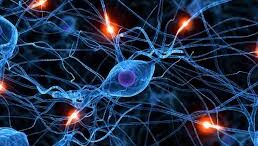Frontpage Journal Business Insights
Organizations today face relentless disruption, from technological shifts to market volatility and evolving workforce expectations. Traditional change management tools often fall short because they underestimate the most critical factor: how the human brain responds to change. Neuroscience now offers a deeper lens, revealing why people resist transformation and how leaders can guide lasting behavioral shifts.
Across research and practice, four core principles stand out as essential for leading change effectively:
1. Change is Pain
Change challenges the brain’s reliance on deeply ingrained habits stored in the basal ganglia. When forced into new routines, the prefrontal cortex, responsible for conscious effort and decision-making, must take over. This requires significant energy and creates physiological discomfort. Leaders often misinterpret resistance as lack of willpower, when in fact it is a neurological reality. Recognizing that discomfort is natural allows leaders to design change processes with empathy, patience, and gradual transitions.
2. Behaviorism Doesn’t Work
The old “carrot and stick” model of incentives and threats fails to create sustainable behavior change. While rewards or punishments may generate short-term compliance, the neural circuits driving habits remain intact. Once external pressure is removed, old behaviors reemerge. Neuroscience confirms that lasting transformation must come from within — through self-generated insight, not imposed instructions. Leaders should focus less on control and more on creating conditions for autonomy and discovery.
3. Expectation Shapes Reality
The brain perceives the world not just as it is, but as it expects it to be. Mental maps, shaped by beliefs, assumptions, and prior experience, determine how employees interpret events and decisions. This is why two people can experience the same customer interaction completely differently. For leaders, the lesson is that culture is built on shared expectations. By cultivating moments of insight that reframe how employees see themselves, their roles, and their customers, leaders can shift entire organizations toward new realities.
4. Attention Density Shapes Identity
Lasting change requires more than one-off inspiration. Neuroscience shows that what people repeatedly pay attention to reshapes their neural circuits, embedding new behaviors into identity. This is why daily routines, feedback, and reminders are so powerful. The more focused and consistent the attention on entrepreneurial thinking, collaboration, or innovation, the more these traits become part of “who we are” rather than “what we do.” Leaders who provide structured opportunities for repeated focus create the conditions for true cultural transformation.
From Insight to Practice
Taken together, these principles form a framework for mindful leadership:
- Acknowledge pain: Recognize that resistance is not defiance but biology. Support people through the discomfort of rewiring habits.
- Replace control with inquiry: Instead of prescribing solutions, ask questions that provoke self-generated insights.
- Reframe expectations: Use storytelling, vision, and dialogue to shift mental maps, so people see change not as a threat but as an opportunity.
- Build attention density: Reinforce new insights through daily practices, coaching, and feedback until they become part of identity.
The Leadership Imperative
Leadership in the 21st century is less about authority and more about guiding the brain through transformation. Toyota’s production system, Springfield Remanufacturing’s open-book management, and other enduring success stories work because they resonate with how people’s brains actually learn, adapt, and adopt new behaviors.
As Peter Drucker famously said, the most pressing task of leaders is to teach people how to learn. Neuroscience now shows us how: by understanding the brain’s discomfort with change, its resistance to external control, the power of expectations, and the transformative role of repeated attention.
Organizations that align leadership practices with these realities will not only navigate disruption more effectively but will also unlock deeper engagement, innovation, and resilience. In short, they will lead change not against the grain of human nature, but in harmony with it.




